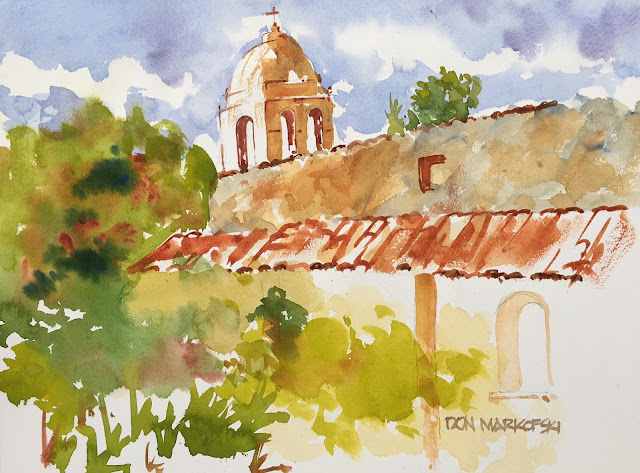Certainly most watercolorists that prefer painting landscapes, seascapes and cityscapes (for example) will find preliminary sketches very useful. The need to create a pleasing composition becomes an important part of the process. Establishing depth, with a good idea how the background, middleground and foreground will be handled is essential. Placement of each element in the composition, as well as varying values and shape relationships all contribute to a more interesting and successful finished watercolor.
The preliminary B&W sketch shown here provides a fair amount of information without being terribly detailed. I know where the sunlight is coming from, the shape of the elements, architectural features and foliage placement. I complete most sketches with a marker. This prevents me from inserting too much detail.
The basic B&W sketch is evident in the preliminary color work. Ultimate placement of the elements hasn't changed. Introduction of color from my palette is shown and minor composition changes are made.



